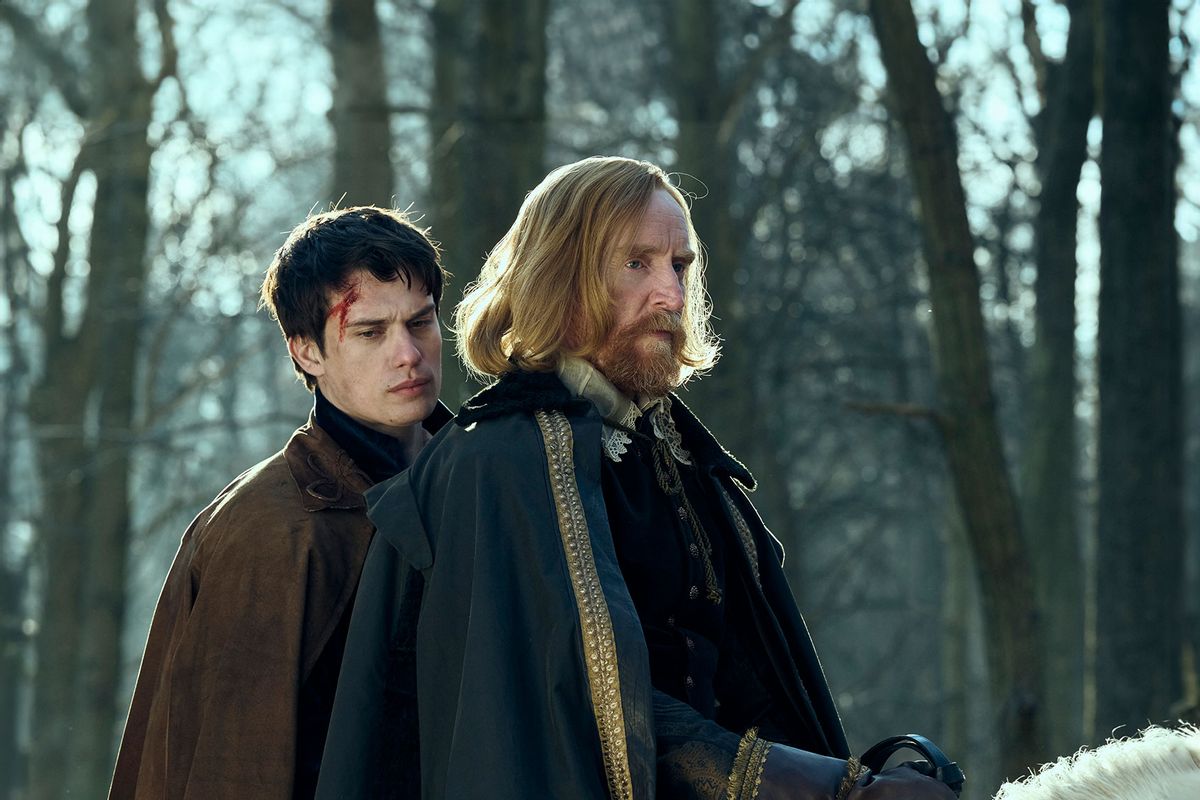Throughout history queer relationships have existed in many forms but "Mary & George" highlights a royal queer relationship between between George Villiers (Nicholas Galitzine) and King James I (Tony Curran).
Based on the book, "The King's Assassin: The Secret Plot to Murder James I," the Starz period drama is about the Villiers — mother and son Mary (Julianne Moore) and George, plotting to snake their way into the good graces of King James. The duo gained social and political power as a result of Mary molding George into a tool to appeal to James and his sexual and romantic desires.
Mary's success landed her and George a close, personal relationship with the king alongside being given significant titles of Countess and Duke of Buckingham. At the time, this made George one of the first commoners not of royal blood to be given a dukedom. James and George's relationship lasted a decade, after their meeting in 1614 and staying together until James died in 1625.
Their companionship began when Mary sent George to France to be educated as a member of high society. He returned to England as a changed man, and soon after as "Mary & George" illustrates, George caught the eyes of the king. According to the creator of "Mary & George," D.C. Moore told Business Insider, it was normal practice to "put hot young men in front of James to try and lure him and try and get a new favorite in place," calling it "the game of the age."
However, James, known for his countless dalliances in court, already had a male lover, a Scottish man named Robert Carr. Robert held the title Earl of Somerset bestowed to him due to favoritism. But that would soon change as opponents of Robert lobbied for the social ascension of George. This led to the commoner gaining favor with the king, ultimately replacing Robert in status and nobility. After Robert lost his standing with the king, George was promoted to Master of the Horse in 1616. In the next few years, he would be promoted to the Earl of Buckingham, the Marquess of Buckingham and eventually the Duke of Buckingham in 1623.
The relationship between George and James deepened as George spent years moving up the court's social ladder. While it is true that James was married to Anne of Denmark, had fathered seven children and reportedly had a mistress in Scotland — George was the king's closest personal and political confidant. Some historians have cited the relationship as "James's last and greatest lover." Restoration work on James' place found a secret passageway connecting the lovers' rooms, BBC reported. While the nature of their sexual relationship has also been questioned, their personal letters to each other have leaned toward the assumption they were together, Smithsonian Magazine said.
In 1617, James said in response to criticism of his relationship with George that he loved him "more than anyone else, and more than you who are here assembled." He continued, "Christ had John, and I have George."
Another letter from James between the lovers in 1623 said, "God bless you, my sweet child and wife, and grant that ye may ever be a comfort to your dear father and husband."
We need your help to stay independent
George reciprocated the sentiments, writing back, "I naturally so love your person, and adore all your other parts, which are more than ever one man had." He continued, "I desire only to live in the world for your sake," and "I will live and die a lover of you."
George also famously once wrote to James, asking "whether you loved me now . . . better than at the time which I shall never forget at Farnham, where the bed's head could not be found between the master and his dog."
In the final years of their relationship and James' life, the pair clashed on policy but their relationship was still steadfast. George was reportedly at James' bedside during his death likely from fever in 1625. However, the duke, unpopular to most people in court, was accused of murdering the king. Just three years later, George was assassinated by a disgruntled lieutenant who was led into a disastrous battle by George. George was survived by his wife a wealthy daughter of an Earl, Katherine Manners and his four children.



Shares